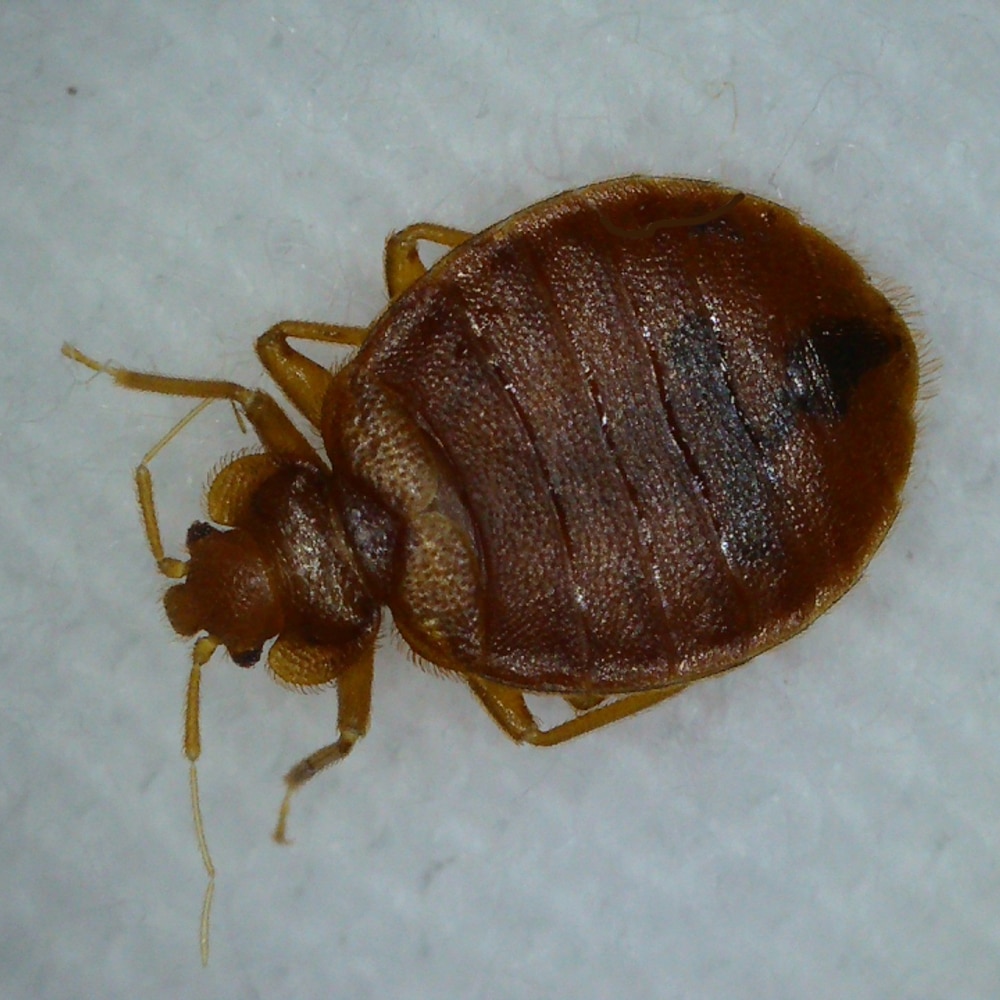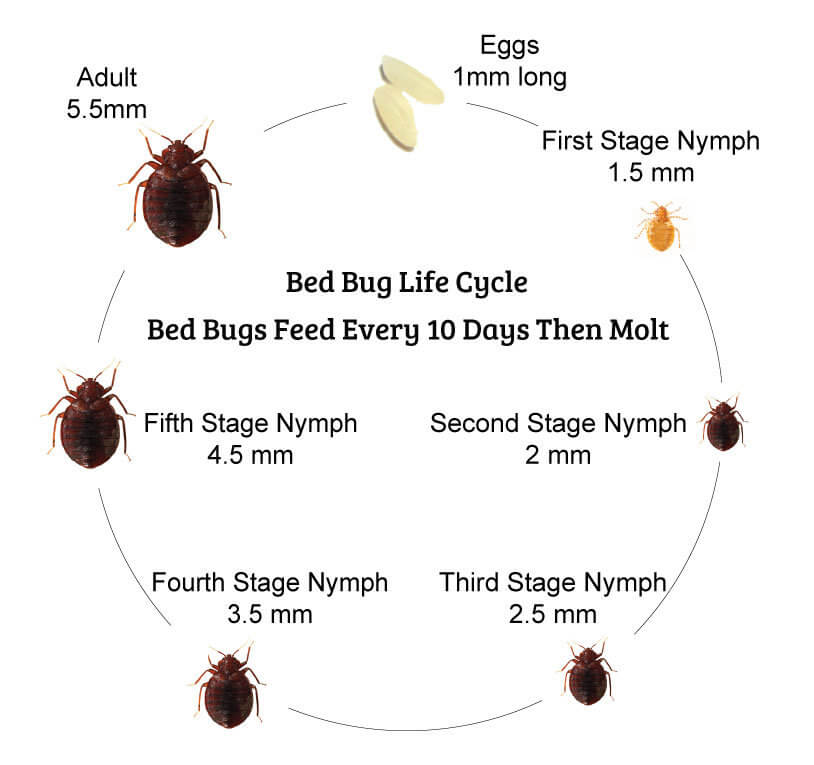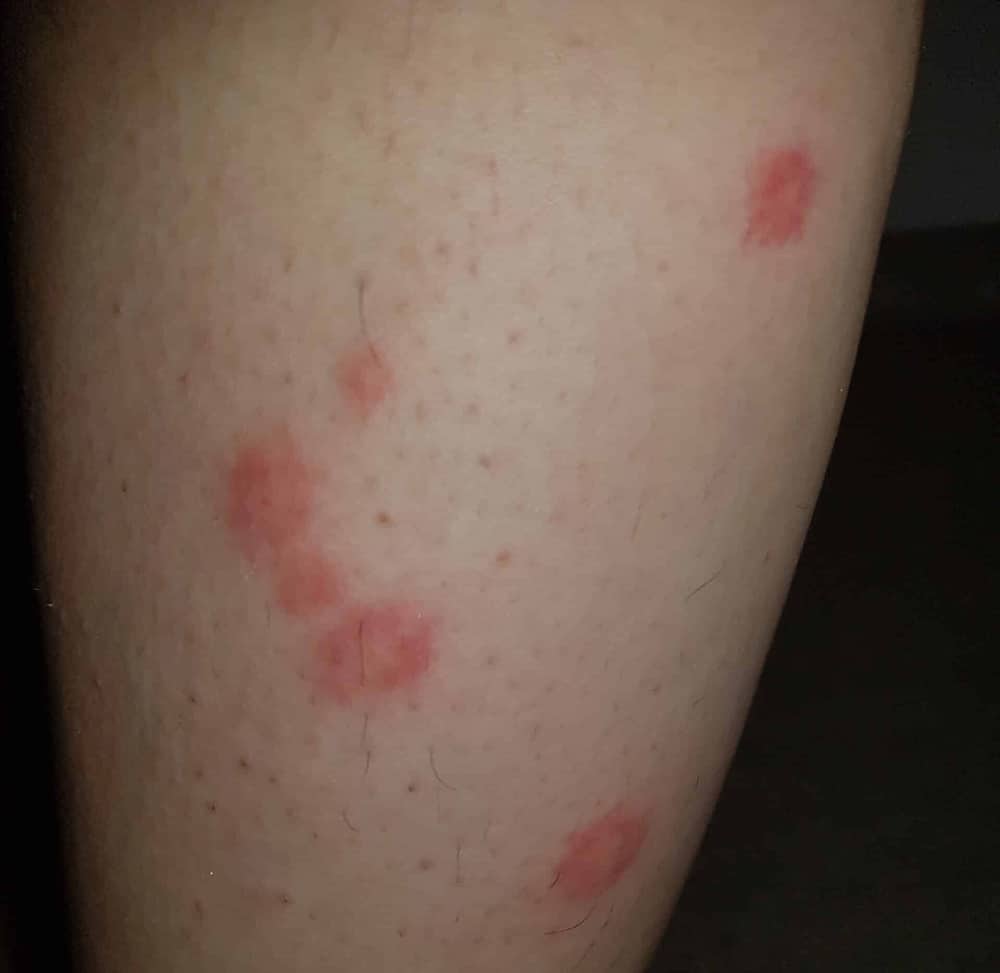
In the article
Bedbugs are a common and highly frustrating problem that can invade any home, hotel, or Airbnb. These tiny bloodsuckers hide in the cracks and crevices of your bed, furniture, and even walls, making them hard to spot and even harder to eliminate.
In this guide, you’ll learn everything you need to know about how to identify, treat, and prevent bedbugs from coming back. Let’s dive into the bedbug life cycle, signs of infestation, bites, and the most effective DIY treatment for long-lasting peace of mind.
What Are Bed Bugs?
Bedbugs are small, oval-shaped insects (5-7mm) that are reddish-brown in color. Unlike fleas, they can’t jump or fly, but they are excellent at crawling and hitchhiking into your home via luggage, second-hand furniture, or even your clothes.
Quick Facts:
- Bedbugs are always looking for a blood meal, usually at night.
- They can live up to one year without a meal.
- They hide in mattress seams, bed frames, carpets, and even walls.
The Bedbug Life Cycle: Understanding the Enemy
Knowing the bedbug life cycle is crucial to wiping them out completely.
- Eggs: Tiny, white, and oval-shaped (about the size of a pinhead), these eggs hatch in 6-10 days. A single female can lay up to 500 eggs in her lifetime.
- Nymphs: These are smaller, lighter-colored versions of adults. Nymphs must feed on blood to grow, molting five times before reaching adulthood. This process takes about 5-6 weeks.
- Adults: Are about the size of an apple seed and can live for over 18 months. They’re ready to reproduce immediately, keeping the cycle going.

Signs & Symptoms of a Bed Bug Infestation
If you suspect bedbugs are in your home, look for these common signs & symptoms:
- Bites: Waking up with red, itchy bites, especially in clusters, straight lines, or a zigzag pattern.
- Blood Stains: Tiny blood spots on your sheets or mattress.
- Fecal Spots: Black spots on your mattress, sheets, or bed frame.
- Exoskeletons: You may find shed skins (exoskeletons) on mattress and bed frame.
- Live Bugs: Bedbugs are most active at night, but you can sometimes spot them during the day.
- Musty Odour: A strong, musty smell can indicate a severe infestation.

Bedbug Bites In ZigZag Pattern
Spotting these signs early is your best chance to prevent a full-blown infestation.
Bedbug Bites: What to Expect
Bed bug bites are typically red, itchy, and appear in a line or cluster. They most often show up on exposed skin like your arms, legs, neck, and face. Unlike mosquito bites, bedbug bites are smaller, more numerous, and tend to follow a pattern.
Bedbugs inject a mild anesthetic into your skin when they bite, so you usually won’t feel it happening. You’ll only notice the bites after they’ve already fed and gone back into hiding.
How to Treat Bites
In many cases, bites will clear up on their own without treatment. However, not everyone reacts the same way to bites. Some people do not react at all, while others may experience allergic reactions that cause intense itching, swelling, or redness.
For relief from the itching:
- Apply an over-the-counter antihistamine or hydrocortisone cream to reduce inflammation and soothe the itch.
- If the itching is severe or if you develop signs of an allergic reaction, such as significant swelling or rash, consult a doctor. They may recommend stronger treatments like prescription creams or antihistamines.
- If the bites become infected—often due to excessive scratching—a doctor may prescribe antibiotics to treat the infection.
It’s important to monitor your symptoms and seek medical advice if the bites worsen or if you suspect an allergic reaction.
How to Check for Bedbugs
Before you panic, here’s how to check if bedbugs have moved in:
- Inspect your sheets for blood stains: This could be from crushing a them after it fed.
- Look for black fecal spots: These look like tiny dots of ink and are often found near seams or cracks in the bed frame.
- Check for eggs and eggshells: Females lay eggs in clusters, often hidden in mattress seams, headboards, or furniture.
- Search for live or dead insects: Finding even one is a sure sign of an infestation.

Adult Bedbug
Found signs? Time to act fast.
Bedbug Sprays: The Truth
When it comes to bedbug sprays, the promises often sound too good to be true—and for a good reason. Most sprays on the market claim to kill them effectively, but here’s the hard truth: they only work on direct contact.
This means they’ll eliminate the bugs you can see, but what about the ones hiding in cracks, crevices, and other hard-to-reach places? Those bugs are left untouched, ready to multiply and reignite the infestation.
Supermarket sprays, like those from Coles and Woolworths, might offer a quick, temporary fix, but they’re far from a long-term solution. These sprays can’t penetrate the deep hiding spots where they thrive, and their effects wear off quickly, leaving your home vulnerable to reinfestation. Worse, the confusing application directions can make it hard to use these products effectively.
DIY Bedbug Treatment
Watch How Our Isolation System Work Instantly & Forever
Skip the sprays and expensive pest control services. With our DIY Isolation System, you can tackle them on your own, and here’s why it’s so effective:
Step-by-Step Treatment:
- Steam Treatment: Use a hand held steamer to kill them on contact. Steam penetrates deep into cracks, crevices, and seams to reach hidden them.
- Apply Diatomaceous Earth (DE): Dust the organic killer powder around the bed frame and headboard. DE works by dehydrating them, killing them over 7 days.
- Use Mattress Covers: Seal your mattress with a mattress cover to trap any bugs inside and prevent new ones from entering.
- Set up Barrier Traps: Install traps under the legs of your bed. This isolates your bed and forces them to cross the DE powder, which will kill them over time.
Why It Works:
This system is uniquely effective because it targets these pests at every stage of their life cycle—eggs, nymphs, and adults—with just one application. By simply placing barriers on the bed legs, they are forced to cross the specially treated barriers in their attempt to reach you.
This ensures that every bloodsucking vampire in the room is eliminated over time as they are drawn to the bed but cannot bypass the barriers. There’s no need for repeat treatments, no toxic chemicals, and no expensive professionals.
Plus, it’s organic, making it completely safe for your family and pets. This hassle-free solution guarantees both immediate relief and long-term protection.
Why Our System Is Better Than A Pest Controller:
If you hire a pest control company, you’ll likely be told to prepare the infested area by using a vacuum cleaner to remove any pests, sealing the vacuum contents in a plastic bag, and washing infested items in hot water—all tedious steps that still don’t guarantee complete eradication.
With our system, none of this is necessary—just apply the solution once, and it will take care of the problem, saving you time, effort, and money.
How to Prevent Bedbugs from Returning
Once you’ve eliminated the infestation, bedbug prevention is key. Here’s how to keep them from coming back:
- Inspect Luggage After Travel: Bedbugs love hotels. Always check your suitcase and wash your clothes after traveling.
- Check Second-Hand Furniture: Thoroughly inspect used furniture before bringing it home.
- Diatomaceous Earth: Dust DE around your bed frame to kill them forever, unless its removed.
- Use Barrier Traps: Keep traps under the legs of your bed to prevent new infestations.
- Mattress Covers: Covers remove all nesting spots, so if they return, they will walk around looking for somewhere to nest but will only find powder on the bed frame whah will kill them.
- Neighbours: To prevent them from neighbours coming into your home dust DE in the powerpoints.
With our Isolation System, you can sleep easy, knowing they won’t be back.
Frequently Asked Questions
- Are they harmful to humans?
Bedbugs don’t spread diseases, but their bites can cause itching, allergic reactions, and stress. - How do I know if I have them?
Look for small, rust-colored stains, shed skins, eggs, or live bugs in mattress seams, furniture, or bedding. - What are the common signs of bedbug bites?
Red, itchy welts in a line or cluster, often on exposed skin areas like arms, neck, and legs. - How can I prevent an infestation?
Inspect second-hand furniture, use mattress covers, and set up bed leg traps. Keep your bed away from walls and furniture. - How do I know if I have bedbugs in Australia?
Check bedding, mattress seams, and furniture for tiny bugs, blood spots, or dark fecal stains. Look for bites after waking up.
Final Thoughts: Take Control of Your Problem Today
Bedbugs don’t just go away on their own. With our DIY Isolation System, you can eliminate them instantly and for good. One application is all you need for long-term peace of mind. No repeat treatments, no toxic chemicals—just effective, lasting protection.
Ready to get rid of these pests?
Shop Now and say goodbye to these nasty vampiers forever.



Adam T says
Is the powder safe for my pets?
What is it made from?
Tony Abrahams says
Hi Adam. Yes, the powder is safe for pets. It’s made from Diatomaceous Earth (DE), a natural substance composed of fossilized remains of tiny aquatic organisms called diatoms. The DE powder we use is food-grade, meaning it’s safe for both humans and animals when used correctly. It works by absorbing the protective oils on insects’ exoskeletons, dehydrating and killing them. Regards BBB
Kristine says
Can you get bedbugs from going to the movies?
Tony Abrahams says
Yes, it’s possible to bring bedbugs home from a movie theater, though it’s rare. Bedbugs can hide in the fabric of theater seats, and they can hitchhike on people’s clothing, bags, or jackets. If someone brings bedbugs into the theater, they could transfer to another person’s belongings.
To reduce your risk, quickly inspect your seat before sitting. Look for any small, dark spots or tiny reddish-brown bugs. Keep your belongings off the floor, and check your clothes and bags when you get home if you’re concerned.
While it’s unlikely, staying cautious in high-traffic places can help you avoid bedbugs.
Vanessa Borg says
Why do supermarkets sell bedbug sprays that are ineffective?
Tony Abrahams says
Hi Vanessa. Supermarkets often sell bedbug sprays that are ineffective because they tend to prioritize stocking products that are widely available, affordable, and have mass appeal. Many of these sprays contain chemicals that may kill bedbugs on contact but don’t provide long-term solutions or penetrate deep enough to eliminate entire infestations. Also, bedbugs have developed resistance to some common pesticides, making these over-the-counter sprays less effective. Since supermarkets aren’t specialized in pest control, they may not carry the more advanced or eco-friendly options that are proven to work better.
Freya says
Is the powder safe for my pet cat, because she is trying to lick it? Thanks
Tony Abrahams says
Hi Freya,
Yes, the powder is safe for pets. It’s a food-grade, non-toxic powder, so it won’t cause any issues if your cat eats it. In fact, farmers feed this powder to their livestock to prevent intestinal parasites.
Regards,
Tony